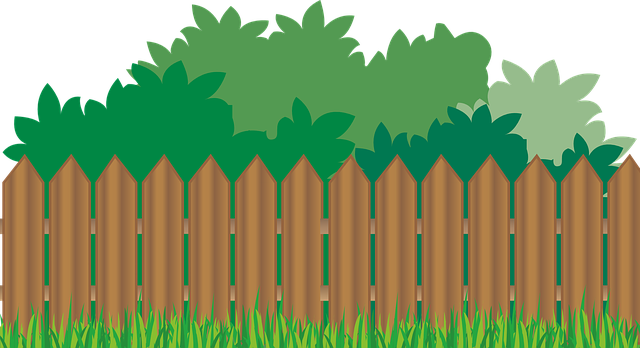In coastal regions, where harsh weather conditions and salty air pose unique challenges, durable wooden fencing is a practical and aesthetically pleasing solution. This article delves into the intricacies of selecting and maintaining robust wooden barriers designed to withstand coastal environments. We explore the advantages of natural wood over synthetic alternatives, guide readers through choosing the ideal species for these conditions, and offer installation and maintenance tips to ensure longevity. Additionally, we discuss environmental considerations, highlighting sustainable practices in fencing.
- Understanding Coastal Fencing Challenges
- Advantages of Durable Wooden Fencing
- Choosing the Right Wood Species
- Installation Considerations for Coastlines
- Maintenance Tips for Longevity
- Environmental Impact and Sustainability
Understanding Coastal Fencing Challenges
Coastal areas present unique challenges for fencing due to their harsh environments. Salty air, frequent rainfall, and strong winds can accelerate wood decay and corrosion, making traditional fencing materials less durable. The constant exposure to moisture weakens wooden structures over time, leading to frequent repairs or replacements. Additionally, the proximity to water bodies means that any fence installed must withstand potential damage from storm surges and high tides.
These challenges necessitate the use of specialized materials and construction techniques for coastal fencing. Durable wooden fences in these areas need to be treated with weather-resistant finishes and made from robust, naturally rot-resistant woods like cedar or redwood. Proper drainage systems and protective coatings further enhance their longevity. Understanding these unique considerations is crucial when selecting fencing solutions to ensure they withstand the test of time and harsh coastal conditions.
Advantages of Durable Wooden Fencing
Durable wooden fencing offers an attractive and natural barrier for coastal areas, blending seamlessly with the environment. One of its key advantages is longevity; properly treated wood can withstand harsh weather conditions, including salty sea air and strong winds, making it a sustainable choice for coastal properties. This type of fencing requires minimal maintenance compared to other materials, saving time and money in the long run.
Additionally, wooden fences provide privacy and security without compromising aesthetics. They can be customized with various styles, colors, and finishes to complement any architectural design. The warm, inviting look of wood adds character to coastal landscapes, creating a sense of comfort and harmony between homes and the natural environment.
Choosing the Right Wood Species
When selecting wood for coastal fencing, understanding the impact of moisture and salt air is paramount. Not all woods are created equal in this regard, so choosing the right species is crucial. Hardwoods like cedar, redwood, and teak have long been popular choices due to their natural resistance to decay and insect damage. These woods contain oils that repel water and prevent mold growth, making them ideal for coastal environments.
Additionally, certain softwoods, such as treated pine or pressure-treated wood, can be suitable options if properly maintained. Treatment processes infuse the wood with preservatives that enhance its durability against moisture and salt corrosion. Researching and selecting a wood species that aligns with your local climate conditions will ensure your fencing remains robust and long-lasting in the face of coastal challenges.
Installation Considerations for Coastlines
When installing wooden fencing in coastal areas, several unique considerations come into play due to the region’s harsh marine environment. First and foremost, the fence must be built to withstand constant exposure to salt air, which can accelerate wood decay. Using durable, treated timber is essential; look for varieties naturally resistant to rot, such as cedar or redwood, or opt for pressure-treated options designed for outdoor use.
Another critical aspect is proper drainage. Ensuring the fence has adequate gaps and is installed on a slightly elevated base helps prevent water accumulation, which can weaken the structure over time. Additionally, regular cleaning and maintenance, including re-staining or sealing the wood, will be necessary to protect the fence from both environmental elements and biological organisms like barnacles and seaweed that might attach to its surface.
Maintenance Tips for Longevity
Maintaining your durable wooden fencing in coastal areas is essential to ensure its longevity and protect your investment. Regular cleaning is key; brush away any sand, salt, or debris that may accumulate on the fence. A soft-bristled brush and a mild detergent are usually sufficient for this task. Avoid using harsh chemicals, as they can strip away the protective coatings and finish.
Moisture is another significant factor. After cleaning, ensure the fence is thoroughly dried to prevent water damage. Consider applying a fresh coat of waterproof sealant or varnish annually to shield the wood from the constant exposure to salt water and humidity. This simple routine maintenance will help preserve the natural beauty of your wooden fencing for years to come.
Environmental Impact and Sustainability
Wooden fencing has long been a popular choice for coastal properties, offering both aesthetic appeal and functional protection. However, selecting durable materials is essential in these areas prone to harsh weather conditions. When it comes to environmental impact and sustainability, choosing the right type of wood is crucial. Opting for treated, high-density wooden fence posts can significantly reduce maintenance needs and their environmental footprint.
These treated woods are designed to withstand extreme conditions, including moisture, salt air, and frequent exposure to sunlight, ensuring they last longer than natural untreated wood. By choosing sustainable sourcing practices and recycling old fencing materials, homeowners can further minimize the ecological impact of their fence installation, contributing to a greener coastal environment.
